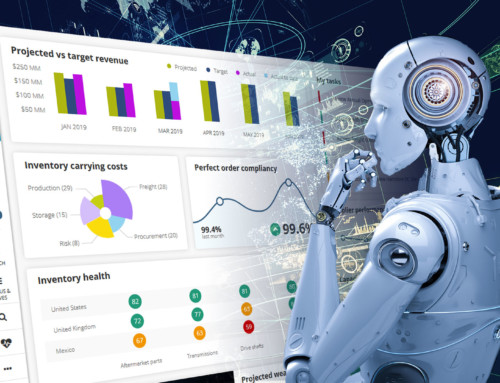Sales and Operations Planning (S&OP)
Sales and Operations Planning (S&OP) is an integrated supply chain management process that aims to align demand and supply while integrating the financial and strategic objectives of the company. This process involves collaboration between different business functions, such as sales, marketing, production, finance and operations, to create a balanced and actionable plan.
s&op supply chain
Five key benefits of S&OP in Supply Chain:
- Improved visibility : It provides a better understanding of future demand and production capacity, reducing uncertainty.
- Inventory optimisation : By more accurately aligning supply and demand, S&OP helps to minimise excess inventory and avoid stock-outs.
- Cost reduction : More accurate planning reduces the costs associated with overstocking, production emergencies and lost sales.
- Improved customer satisfaction : By ensuring that products are available when and where they are needed, S&OP contributes to better customer satisfaction.
- Strategic alignment : The process aligns day-to-day operations with the company’s strategic objectives, facilitating better decision-making.
s&op supply chain
HOW DO YOU SET UP AN EFFECTIVE S&OP PROCESS?
1 – DEFINE CLEAR OBJECTIVES
Establish a coherent vision of what the company wants to achieve with S&OP in supply chain, thereby aligning efforts with measurable strategic outcomes and ensuring clear direction for all stakeholders involved in the process.
2 – SET UP A DEDICATED S&OP TEAM
Include representatives from all the company’s key functions, ensuring effective cross-functional collaboration and collective decision-making aligned with the S&OP’s strategic objectives.
3 – DRAW UP AN S&OP TIMETABLE
Define a regular rhythm for meetings and plan revisions to ensure proactive planning and quick adaptation to changes.
4 – COLLECT AND ANALYSE DATA
Effectively inform strategic sales and operations planning. This will enable an in-depth analysis of market trends, variations in demand, available production capacity and the associated financial implications.
5 – DEVELOP ALTERNATIVE SCENARIOS AND PLANS
Anticipating different demand and capacity scenarios involves planning for a variety of possible situations, such as seasonal fluctuations, economic changes, new product launches or unforeseen variations in customer demand.
6 – USING TECHNOLOGICAL TOOLS
Implementing S&OP software is a crucial step in modernising and streamlining the sales and operations planning process. These specialised tools make it possible to centralise and synchronise data from various company functions, such as sales, production, finance and logistics.
7 – TRAIN THE TEAMS
Ensuring that all team members fully understand the S&OP process and their respective roles is crucial to ensuring smooth and efficient execution of the plan. This involves not only providing adequate training on the stages of S&OP and the tools used, but also clarifying the specific responsibilities of each individual within the S&OP team.
8 – ASSESS AND ADJUST REGULARLY
Regularly analysing S&OP performance and making ongoing adjustments is essential to optimising sales and operations planning. This makes it possible to assess the effectiveness of forecasts, the accuracy of capacity plans and alignment with the company’s strategic objectives.
WHAT ARE THE KEY STAGES IN THE S&OP PROCESS?
The key stages in the S&OP process are as follows:
- Data collection : Gathering accurate data on sales, production, stocks and capacities.
- Demand forecasting : Developing forecasts based on historical data, market trends as well as sales & marketing initiatives.
- Supply planning : Determine production capacity, stock levels and supply requirements.
- Gap analysis : Compare demand forecasts with supply capacity and identify gaps.
- Scenario development : Create alternative plans for different demand and supply scenarios.
- Consensus meeting : Bring stakeholders together to discuss and validate the S&OP plan.
- Execution and monitoring : Implement the approved plan and monitor performance to adjust if necessary.
s&op supply chain

CROSS-FUNCTIONAL COLLABORATION IN S&OP
Cross-functional collaboration is essential to the success of S&OP, as it ensures that all business functions are working towards the same strategic objectives, facilitates the flow of information between sales, production, marketing, finance and other functions, reduces organisational silos by encouraging more informed and consistent decision-making, and enables the rapid identification and effective resolution of potential problems.
How can demand forecasts be managed as part of S&OP? To effectively manage demand forecasts as part of S&OP, it is crucial to analyse historical sales data to identify trends and recurring patterns. By integrating information from sales and marketing teams, including marketing initiatives, product launches and promotions, forecasts can be refined. In addition, working with customers to gain direct insights helps to further refine forecasts. Finally, it is essential to regularly update forecasts in line with new data and market developments, ensuring continuous adaptation and proactive demand management.
Management commitment, the use of advanced technologies, regular team training and close collaboration with partners are essential in order to optimise S&OP in the supply chain Ongoing team training on S&OP processes and tools is also essential to maintain up-to-date skills.Continuous improvement must be a priority, with constant re-evaluation and optimisation of the S&OP process.
s&op supply chain
THE PERFORMANCE OF AN S&OP PROCESS
Several indicators can be used to measure S&OP performance.
- Forecast accuracy is assessed by comparing demand forecasts with actual sales.
- Stock levels are measured to assess the effectiveness of stock management.
- Customer service rate is another key indicator, measuring the ability to respond to customer requests in a timely manner.
- Supply chain costs, including those associated with production, storage and distribution, are analysed to identify opportunities for reducing costs.
- Finally, the planning cycle is measured to determine the time taken to complete an S&OP planning cycle, which helps to assess the efficiency and responsiveness of the process.
Integrating sustainability and social responsibility into S&OP ? It is crucial to define specific sustainability objectives at the start of the planning process in order to integrate sustainability and social responsibility into S&OP. Using environmental performance indicators makes it possible to measure and monitor the impacts of operations, such as energy consumption and greenhouse gas emissions. Working with suppliers committed to sustainable practices, such as the use of eco-friendly materials and ethical production practices, reinforces sustainability throughout the supply chain.
s&op supply chain
How S&OP Improves Sustainability in Supply Chain Management
Incorporating sustainability into the S&OP process can drive significant environmental and social benefits. Businesses today are under increasing pressure to reduce their carbon footprint and minimize waste. Through strategic S&OP, companies can ensure that their supply chain is more sustainable by optimizing logistics routes, reducing excess inventory, and prioritizing eco-friendly sourcing.
Sustainability KPIs can be built into the S&OP framework, allowing companies to track their progress in areas such as energy consumption, emissions reduction, and ethical sourcing. This not only aligns operations with broader corporate social responsibility (CSR) goals but also meets the expectations of increasingly eco-conscious consumers.
s&op supply chain
Common Pitfalls to Avoid in the S&OP Process
While S&OP offers many benefits, there are common challenges that companies should be aware of to avoid costly mistakes:
- Lack of Data Integration: Without a unified data platform, different departments may rely on inconsistent data, leading to misalignment and poor decision-making.
- Siloed Operations: Failing to encourage cross-functional collaboration can result in operational silos, where each department works independently, leading to inefficiencies and miscommunication.
- Infrequent Meetings: Successful S&OP requires regular reviews and updates. Delayed meetings or ad-hoc processes can hinder the team’s ability to respond to market changes.
- Resistance to Change: Teams that are accustomed to traditional processes may resist adopting new S&OP software or methodologies. Effective change management and training are key to ensuring smooth transitions.
By proactively addressing these challenges, companies can enhance the effectiveness of their S&OP process and achieve better results.
s&op supply chain
CURRENT CHALLENGES IN S&OP
Common challenges include data quality, which can affect the accuracy of forecasts and plans, as well as a lack of collaboration due to organisational silos that hinder the necessary communication. Resistance to change is also a barrier, as employees can be reluctant to adopt new processes and tools. Strategic alignment is often an issue, with difficulties in aligning day-to-day operations with long-term strategic objectives. Finally, the complexity of the process, with the management of multiple variables and stakeholders, can make S&OP difficult to manage.




